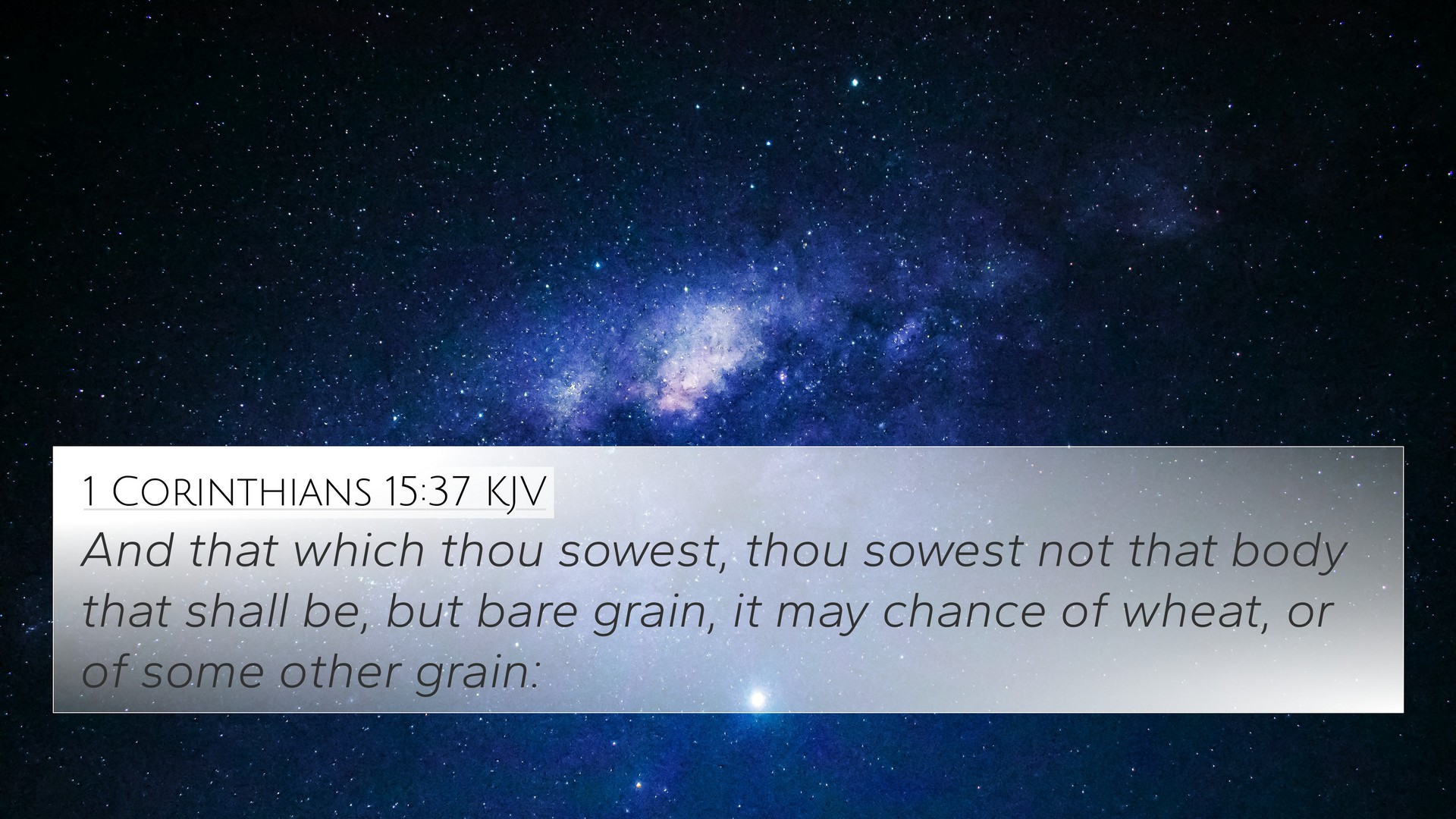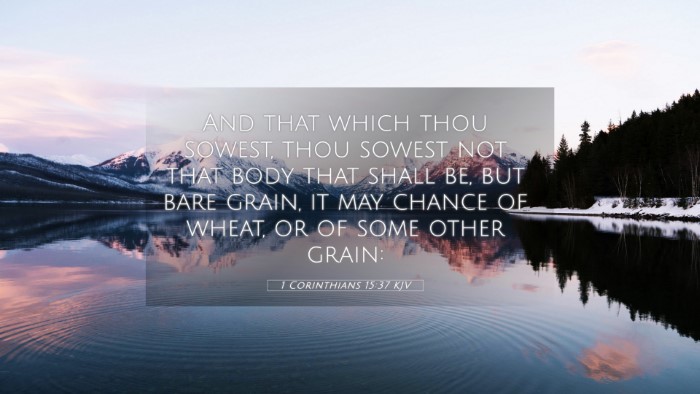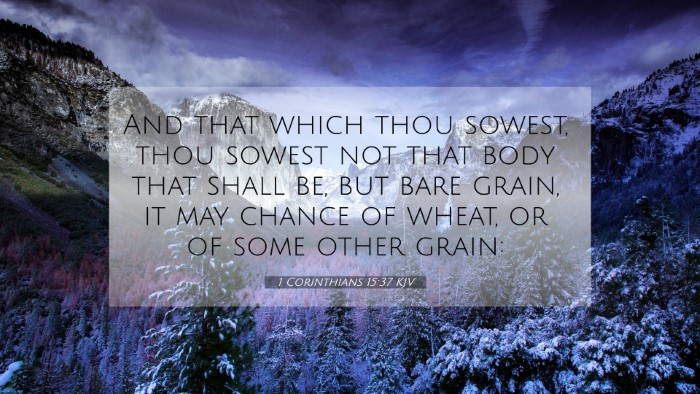Understanding 1 Corinthians 15:37
1 Corinthians 15:37 states: "And that which thou sowest, thou sowest not that body that shall be, but bare grain, it may chance of wheat, or of some other grain." This verse employs agricultural imagery to illustrate the nature of resurrection and transformation.
Summary of the Verse
This verse emphasizes the difference between the seed that is sown and the body that emerges. The seed represents our current earthly existence, while the sprouted body represents our future existence in a resurrected state. Apostles are reminding believers of the change and transformation that occurs through resurrection, much like a seed transforming into a plant.
Commentary Insights
-
Matthew Henry:
Henry explains that this metaphor of sowing conveys the idea of death leading to a greater form of life. The grain symbolizes the initial body, which must die and be transformed to gain new life.
-
Albert Barnes:
Barnes indicates that this verse illustrates the principle of continuity between the present and resurrected forms. The distinction between the seed and the plant brings hope regarding our spiritual transformation, suggesting believers will not be resurrected in their current physical structures but in glorified forms.
-
Adam Clarke:
Clarke elaborates on the analogy that highlights not just transformation but also the diversity of bodies that God can give. It speaks to the hope of different, glorified bodies suited for eternity.
Cross-References
To gain a deeper understanding, we can look at several related Bible verses that echo the themes of transformation, resurrection, and new life:
- John 12:24: "Verily, verily, I say unto you, except a corn of wheat fall into the ground and die, it abideth alone: but if it die, it bringeth forth much fruit."
- Philippians 3:21: "Who shall change our vile body, that it may be fashioned like unto his glorious body, according to the working whereby he is able even to subdue all things unto himself."
- 2 Corinthians 5:1: "For we know that if our earthly house of this tabernacle were dissolved, we have a building of God, an house not made with hands, eternal in the heavens."
- Romans 8:11: "But if the Spirit of him that raised up Jesus from the dead dwell in you, he that raised up Christ from the dead shall also quicken your mortal bodies by his Spirit that dwelleth in you."
- 1 Peter 1:23: "Being born again, not of corruptible seed, but of incorruptible, by the word of God, which liveth and abideth forever."
- Isaiah 61:3: "To appoint unto them that mourn in Zion, to give unto them beauty for ashes, the oil of joy for mourning, the garment of praise for the spirit of heaviness; that they might be called trees of righteousness, the planting of the Lord, that he might be glorified."
- Revelation 21:4: "And God shall wipe away all tears from their eyes; and there shall be no more death, neither sorrow, nor crying, neither shall there be any more pain: for the former things are passed away."
Connections between Bible Verses
The theological implications of 1 Corinthians 15:37 resonate throughout the Scriptures, drawing thematic connections:
- Newness of Life: Romans 6:4 discusses being raised to walk in newness of life, paralleling the transformation imagery of 1 Corinthians 15:37.
- Resurrection Hope: 1 Thessalonians 4:14 confirms the hope of resurrection through Christ—a core belief akin to the transformation depicted in this verse.
- God's Creative Power: Genesis 1:11-12 illustrates God's power in creating diverse forms of life, which complements the bold promise of varied, glorified bodies in the resurrection.
Cross-Referencing Biblical Texts
This passage encourages believers to engage in cross-referencing Bible verses to explore the depths of God's promises. Understanding how scripture dialogues with itself can reveal profound insights into spiritual truths.
Thematic Bible Verse Connections
The metamorphosis discussed in 1 Corinthians 15:37 illustrates a larger biblical theme of transformation—central to the resurrection doctrine. This can be found in:
- Transformative nature of faith in Galatians 6:15
- Promise of eternal bodies as indicated in 1 John 3:2
How to Use Bible Cross-References
Employing tools like a Bible concordance or cross-reference guide can significantly enhance your understanding. Cross-referencing allows one to see how different biblical texts illuminate a shared theme or doctrine, providing richer insights.
Conclusion
1 Corinthians 15:37 serves as a powerful reminder of the transformative power of God in the resurrection. Through understanding connections between Bible verses, believers can draw encouragement from God’s promises about life after death and the glorious transformations that await.


